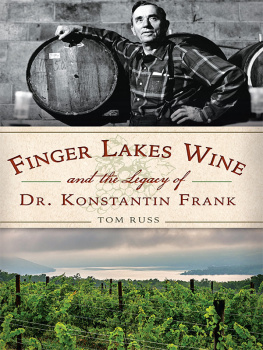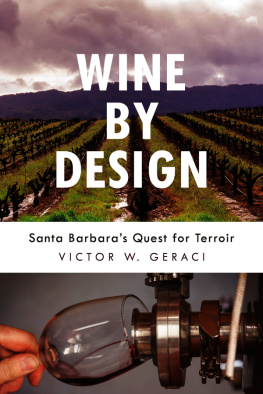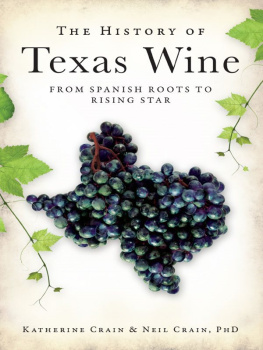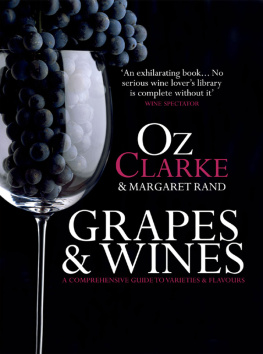

Published by American Palate
A Division of The History Press
Charleston, SC 29403
www.historypress.net
Copyright 2015 by Tom Russ
All rights reserved
Images used with the permission of Dr. Franks Vinifera Wine Cellars unless otherwise noted.
First published 2015
e-book edition 2015
ISBN 978.1.62585.267.0
Library of Congress Control Number: 2014953438
print edition ISBN 978.1.62619.734.3
Notice: The information in this book is true and complete to the best of our knowledge. It is offered without guarantee on the part of the author or The History Press. The author and The History Press disclaim all liability in connection with the use of this book.
All rights reserved. No part of this book may be reproduced or transmitted in any form whatsoever without prior written permission from the publisher except in the case of brief quotations embodied in critical articles and reviews.
For Karla, always.
CONTENTS
FOREWORD
Konstantin Frank is viewed as a true American patriot and pioneer. Born on July 4, 1899, in the Ukraine, he pioneered the introduction of the noble European grapes to the Finger Lakes and other eastern states. Konstantin wanted the eastern wine industry to prosper and was very giving with his knowledge and techniques to allow other vineyards and wineries to follow his lead. He felt that Americans deserved only the best wines produced from the Vitis vinifera wine grapes. At this time in the 1950s, the New York wine industry was in a state of happy mediocrity. It was difficult for Konstantin to convince academia and other grape growers and wineries to switch to higher-quality vinifera when they were easily selling wines from native grapes that required less care.
Gradually, Americans began to demand higher-quality wines from the vinifera varieties such as Riesling, Chardonnay, Gewurztraminer, Pinot Noir and so on. This demand for better-quality wines was supplied quickly by California wineries, and the majority of New York wineries continued producing wines from the native Vitis labrusca grapes, resulting in lost market share. Several wineries even went out of business. Konstantin had a small group of cooperators who learned from and worked with him. Those cooperators later started wineries in other eastern states, leading to a renaissance in the wine quality of eastern wines. Today, all fifty states have wineries, and this has resulted in more Americans learning about wines and touring these regional wineries. This has created an increase in per capita wine consumption among Americans, and now the United States has become the largest wine market in the world.
The winery founded by Konstantin in 1962 is now in its fourth generation of family management. Dr. Franks winery receives record numbers of gold medals in national and international wine competitions each year. Many of these awards are even higher in esteem than gold medals such as Best of Class or even Sweepstakes Winner, chosen as best wine of the entire competition. In addition, there have been many accolades in the press praising Dr. Franks wines and giving them high ratings. I welcome you to visit our beautiful winery overlooking Keuka Lake in Hammondsport for a tasting of these award-winning wines. In addition, please visit our website at www.drfrankwines.com to learn more about New Yorks Most Award Winning Winery.
Our family is very grateful to Tom Russ for all of his time and dedicated research in writing this wonderful book. There have been several writers who started on similar projects but, for various reasons, did not follow through with their plans. I was getting discouraged that the wonderful story about Konstantins life would never be told. In addition, I would like to thank all the family members and friends of Konstantin who spent many hours being interviewed by Tom and providing him with some great stories. Finally, I would like to thank Konstantin for being a loving grandfather and mentor to me.
I hope you enjoy the book as much as I have. Remember to always trust your convictions and never give up. Always carry on in what you believe in.
Cheers,
Frederick Frank
ACKNOWLEDGEMENTS
Every book requires the acknowledgement of people who have assisted the author in the effort to bring the book to life. Writing the story of a lifeor, in this case, the story of a familyis not possible without help from many sources. The challenge of acknowledging those who have helped is trying to include everyone.
The staff at the New York State Agricultural Experiment Station at Geneva, New York, particularly Michael Fordon, were critical in the earliest stages of research. Fordons colleagues at the Croch Library at Cornell University, particularly Evan Fay Earl, were also extremely helpful and patient. Olga Shaposhnikova, a postgraduate student working on her doctorate in viticulture from the University of Odessa and completing a year of work at the Geneva Experiment Station, was helpful in describing some of the idiosyncrasies of the Ukrainian education system, and she shared information about the physiography of the region of Ukraine where the Frank family lived.
Mr. John Babcock provided remembrances of Dr. Frank and the vigor of the man even into his eighties. John and his wife, Doris, were longtime friends of Dr. and Mrs. Frank and had important insights into their relationship and the doctors motivation and sincerity. Robert Hutton of Alexandria, Virginia, also shared his experiences with Dr. Frank and provided translation of documents written in Russian. His knowledge of Russia and the Ukraine allowed deeper understanding of what the Frank family had endured and survived. Darmon Gleason was a neighbor and worked with Dr. Frank during the Gold Seal years, and he shared his experience and recollections of working side by side with Dr. Frank and with Eugenia Frank once Vinifera Wine Cellars was established.
Mike Elliot, Eric Frey, Peter Bell and Morton Hallgrenall winemakers under Willy Frankwere helpful in the recollections of the winery and its operations. Their thoughts and those of Mark Veraguth provided insight into the days of the fledgling and patchwork operations of Vinifera Wine Cellars. Kevin Zraly provided more firsthand accounts of Konstantin Frank and the winery operations in the early 1970s. His time was very much appreciated and helped to fill in my impression of Konstantin Frank as a man. Hudson Cattell opened his prestigious memory and allowed the use of a recorded interview with Dr. Frank, as well as provided valuable criticism along the way.
It is most important to mention up front the contribution of Fred Frank. This book is, to a large extent, a product of his enthusiasm for his familys story. Fred spent many hours answering questions, going through files, suggesting resources and people to contact. Mrs. Lena Schelling, Dr. Franks youngest sister, was also a helpful source of information. Lena was the Frank family photographer and recorded much of their life in Ukraine and the flights to Austria and Bavaria in photos that she enthusiastically sharedeach has its own story and context. She also agreed to their reproduction in this book. Appreciation must also be extended to Ms. Erin Flynn of Dr. Franks Vinifera Wine Cellars staff and to James Gavacs of Ettore Winter Studio for their help with the images in the book.
Given that I am not a wine expert, I relied heavily on the help and guidance of many people. Mark Veraguth, the head winemaker at Vinifera Wine Cellars, was extremely helpful in understanding the history of the winemaking operation, the unique problems facing winemakers and the ever-present management challenges of cellar operations. Eric Frey, Peter Bell, Morten Hallgren and Barbara Frank provided needed guidance and education on the technical questions about wine and winemaking. Eric Volz, vice-president of Vinifera Wine Cellars and another grandson of Dr. Frank, was very helpful in understanding the vineyard operations. Additionally, his personal recollections of the many days spent working with his father, Walter, and Dr. Frank provided a unique glimpse into not only life with Dr. Frank but also the life and work of Walter Volz.
Next page










